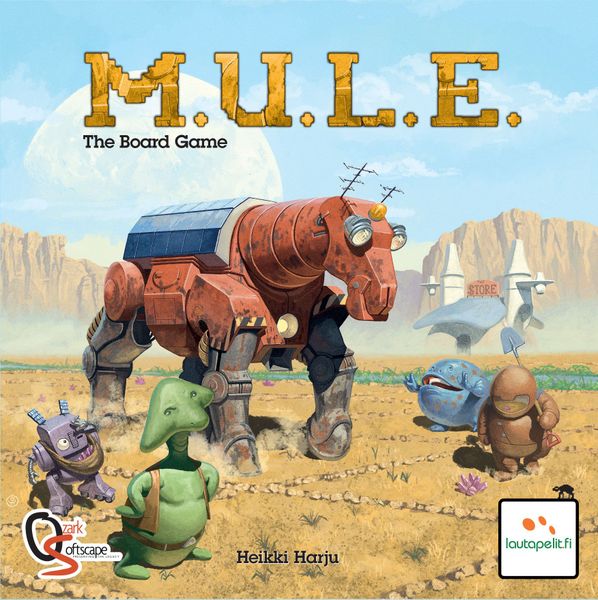M.U.L.E. The Board Game (2015) Board Game
M.U.L.E. The Board Game is based on the classic 1983 video game of the same name. The original video game was designed by Dani Bunten and became a cult classic for its innovative gameplay and economic simulation mechanics. The board game adaptation was released in 2015 by Lautapelit.fi and brought the beloved video game to the tabletop world.
Game Components of M.U.L.E. The Board Game
How To Setup M.U.L.E. The Board Game
To set up the game, each player selects a player board and receives a set of M.U.L.E. units and starting resources. The market boards are placed in the center, and the Event Cards are shuffled and placed within reach of all players. Each player is given a free plot of land at the start, a mechanic introduced to prevent the wealthiest player from dominating the game early on.
Gameplay Mechanics and Game Objective
Player Experience
Playing M.U.L.E. The Board Game is a deeply strategic and often ruthless experience. Players must be willing to actively sabotage their opponents to succeed, making it a game that encourages heartless tactics. The game mimics real-world economic principles, such as supply and demand, and includes fun elements like random events that can turn the game around. However, it requires a mindset where players are comfortable with the idea of screwing over their opponents as part of the gameplay.
Pros
Cons
Personal Thoughts on M.U.L.E. The Board Game
M.U.L.E. The Board Game is ideal for players who enjoy complex economic simulations and are not afraid to engage in cutthroat tactics. It is a great choice for those who appreciate strategic gameplay and are willing to invest time in learning the rules. However, it may not be the best fit for players seeking a more casual or cooperative gaming experience. The game’s nostalgic value for fans of the original video game adds an extra layer of enjoyment, but it can also stand on its own as a unique and engaging board game.
We are supported by our audience. When you purchase through links on our site, we may earn an affiliate commission, at no extra cost for you. Learn more.

